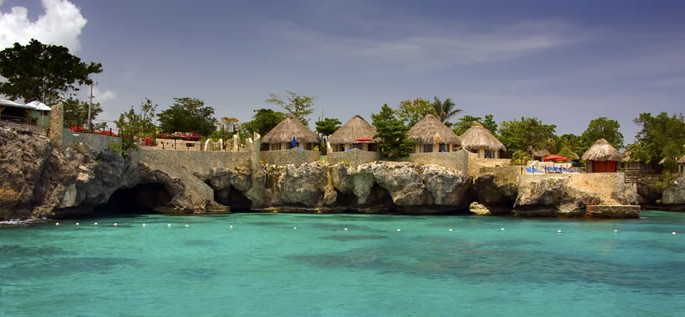
Creole Languages
When groups of people speaking different languages come together and intermix, a common improvised second language, called a pidgin, occasionally develops. It allows speakers of two or more non-intelligible native languages to communicate with each other. Subsequently, such a language can replace the settlers’ original language and become the first language of their descendants. Such languages are called creoles. The difference between pidgins and creoles is that people grow up speaking creoles as their first language, whereas nobody speaks pidgin as their first language. There is no single accepted theory that explains the genesis of creole languages.
The term creole comes from the French creole, from Spanish criollo ‘person native to a locality’. The word was coined in the 16th century and applied to people born in the colonies, to distinguish them from European-born immigrants. In the Portuguese-speaking world, the term referred specifically to people of mixed European and non-European ancestry.
Since most creole languages developed in the colonies they are typically based on English, French, Portuguese, and Spanish, the languages of the superpowers of the time. However, there are also numerous creoles based on other languages such as Arabic, Hindi, and Malay.
Over time, creoles develop expanded vocabularies and more complex grammatical features that were not present in the pidgins from which they evolved. Most creole speakers control a number of levels and can shift up and down. At the highest level, creoles can merge with the standard variety of the language on which they were based. For instance, there is indication that Jamaican Creole has merged with Standard Jamaican English, and that Hawai’ian Creole at its highest level has merged with Hawai’ian English.
Below is an annotated and linked list of the some of the major creole languages of the world.
|
Eastern
|
||
|---|---|---|
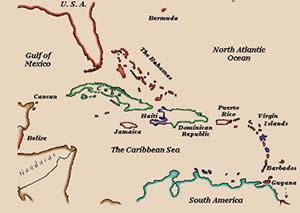
Most English creoles were formed in the British colonies in the 17th and 18th centuries. They are spoken on the islands of the Caribbean Sea, in Africa, and on the islands of the Pacific Ocean. The largest ones are listed below.
|
||
| Jamaican Creole | 3,181,171 | Jamaica |
| Bajan | 259,000 | Barbados |
| Sea Island Creole (Gullah) | 250,000, of which 5,000 to 10,000 are monolingual | Sea Islands and the adjacent coastal regions of South Carolina, Georgia and northern Florida. |
| Bahamas Creole | 225,000 | Bahamas |
| Antigua and Barbuda | 125,000 | Antigua and Barbuda, also spoken in Anguilla, Dominica,Montserrat, Saint Kitts and Nevis, United Kingdom |
| Sranan | 120,000 first-language and 300,000 second-language speakers | Suriname |
| Belize Kriol | 95,051 | Belize, U.S. |
| Tobagonian | 36,000 | Tobago and Trinidad |
| Saramaccan | 26,000 | Suriname |
|
African
|
||
| Krio | 473,000 1st language speakers and possibly 4 million 2nd language speakers | Sierra Leone |
| Nigerian Pidgin | no estimate available | Nigeria |
| Cameroon Pidgin English | over 2 million 2nd language users, and a growing number of 1st language speakers | Cameroon |
|
Pacific
|
||
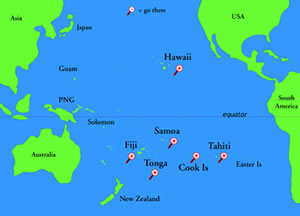 |
||
| Hawai’ian Creole | 600,000-700,000 | U.S. |
| Tok Pisin | 121,000 1st and 4 million 2nd language speakers | Papua New Guinea |
| Torres Strait Creole | 23,400 | Torres Strait, Australia |
| Kriol | 10,000 | Australia |
| Bislama | 6,200 1st language and 128,000 2nd language speakers | Vanuatu |
|
French creoles are spoken today mainly in the Caribbean, in the U.S., and on several islands in the Indian Ocean.
|
||
|
Caribbean
|
||
|---|---|---|
| Haitian Creole | 7,389,066 | Haiti, U.S. |
| Guadeloupean Creole | 848,000 | Guadeloupe, Martinique |
| Louisiana Creole | 60,000-80,000 | U.S. |
| Guianese Creole | 50,000 | French Guiana |
| Amapá Creole | 25,000 | Brazil |
|
Indian Ocean
|
||
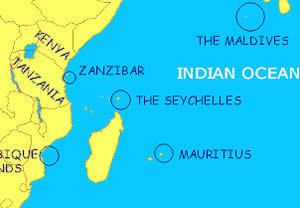 |
||
| Morisyen Creole | 604,000 | Mauritius |
| Réunion Creole | 600,000 | Réunion |
| Seychellois Creole | 72,7000 | Seychelles |
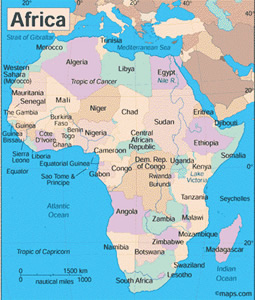 Originally spoken over a wider area, Portuguese-based creoles are presently spoken by over a million people in São Tomé e Principe, Cape Verde Islands, and Guinea-Bissau. Elsewhere in the world, they are almost extinct. Originally spoken over a wider area, Portuguese-based creoles are presently spoken by over a million people in São Tomé e Principe, Cape Verde Islands, and Guinea-Bissau. Elsewhere in the world, they are almost extinct.
|
||
| Kabuverdianu | 926,078 | Cape Verde Islands |
| Crioulo, Upper Guinea | 392,350 1st and over 600,000 2nd language speakers | Guinea-Bissau |
| Sãotomense | 70,000 | São Tomé e Principe |
| Chavacano | 292,630 | Philippines |
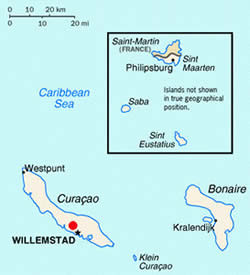 |
||
| Papiamentu | 319,000 1st and 20,000 2nd language speakers | Netherland Antilles |
| Tsotsitaal | tens of thousands of 1st language users, hundreds of thousands of 2nd language users | South Africa |
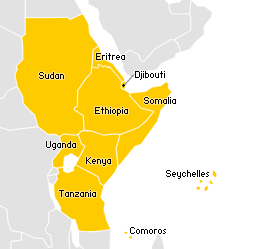 |
||
| Arabic, Sudanese Creole | 20,000 1st and 44,000 2nd language users | Sudan |
| Nubi | 14,739 | Uganda, Kenya |
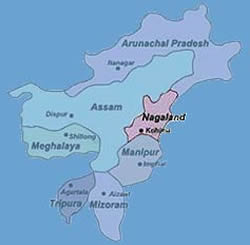 |
||
| Naga | 30,000 | India |
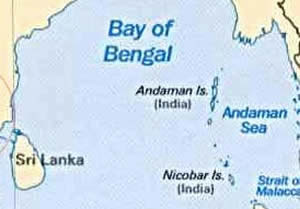 |
||
| Andaman Creole | 10,000-31,000 | Andaman and Nicobar Islands |
| Peranakan | 20,000 | Indonesia (Java and Bali) |
| Kituba | 4.2 million | Democratic Republic of Congo |
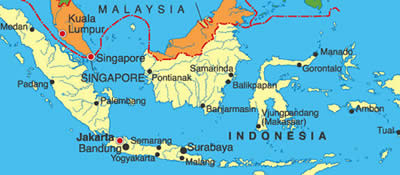 Malay-based creoles developed as a result of inter-island trading and interaction when people speaking different languages came together. They were influenced by Dutch(as a result of 3 centuries of colonization), Portuguese, as well as by local languages. Malay-based creoles developed as a result of inter-island trading and interaction when people speaking different languages came together. They were influenced by Dutch(as a result of 3 centuries of colonization), Portuguese, as well as by local languages.
|
||
| Betawi | 2.7 million | Indonesia |
| Ambonese | 245,000 | Indonesia |
| Malay Kupang | 200,000 | West Timor |
| Sri Lankan Creole Malay | 50,000 | Sri Lanka |
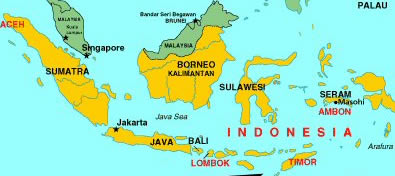 |
||
| Tetun-Dili | 50,000 | East Timor |
 |
||
| Sango | 404,000 1st language and 1,6 million 2nd language speakers | Central African Republic |
| Cutchi-Swahili | 46,000 | Kenya, Tanzania |
Status
Creole people were held in low esteem by European colonizers, and their languages were regarded as unrefined and primitive. Lacking political power, creole languages languished without recognition for many centuries. However, as a result of political and social changes, they have been experiencing a revival since the middle of the 20th century. Many of them have been standardized, and are now being taught in local schools and universities, and studied as foreign languages. They are also being increasingly used in education, government, business, and the media. A number of creoles have achieved the status of official languages:
- Bislama is the official language of Vanuatu.
- Haitian Creole is the official language of Haiti.
- Tok Pisin is one of the official languages of Papua New Guinea.
- Sãotomense is the national language of São Tomé Island.
- Kituba is the national language of Congo.
- Sango is the national language of Central African Republic.
- Seychelles Creole is both a national and an official language alongside English and French in the Republic of Seychelles.
Dialects
Structure
The world’s creoles display many differences in their sound systems, grammar, and vocabulary. At the same time, they share some common features. There is no single accepted theory that explains why creole languages have certain similarities.
Sound system
Creole languages are generally characterized by the following:
- smaller inventories of sounds, especially consonants, than the languages on which they were presumably based.;
- absence of consonant clusters;
- lack of tones.
Grammar
Creole grammars are generally simpler than the grammars of the languages on which they were originally based. Below are some of the features of creole grammars:
- absence of number, gender, and case marking in nouns and adjectives;
- fairly complex systems of personal pronouns;
- invariant verb forms which are commonly either derived from the infinitive or based on the least marked finite verb form;
- absence of copula, e.g., in Hawai’ian Creole, mai sista skini ‘my sister is skinny’, yu da boss ‘you are the boss’;
- loss of determiners or use of demonstrative pronouns, adjectives or adverbs in place of determiners;
- placement of a negative particle before the verb;
- use of adverbs or verbs such as stay, to express tense and modality, e.g., in Hawai’ian Creole, Da cat ste eating da fish ‘The cat is eating the fish’;
- fixed word order with no inversion in questions, e.g., in Hawai’ian Creole, You go holo-holo? ‘Are you going on vacation?’
Vocabulary
Since vocabulary is restricted, words in a creole languages usually have a greater range of meanings than in the language from which the word was borrowed, e.g., in Tok Pisin, stap ‘stop’ means “be located, to remain, to continue’. Some concepts are expressed by phrases rather than by single words, e.g., in Tok Pisin skru bilong arm means ‘ elbow’ (literally ‘screw (joint) of the arm’), or ars ‘bottom’ is extended to mean ‘foundation, basis,’ e.g., ars bilong diwai ‘base of a tree’. Non-English meanings of words often reflect native social structure, as when papa in Tok Pisin means ‘uncle’, since a boy’s maternal uncle rather than his biological father (papa tru) is primarily responsible for his upbringing in Papua New Guinea.
Below are numerals 1-10 in four creoles.
|
1
|
2
|
3
|
4
|
5
|
6
|
7
|
8
|
9
|
10
|
|
|---|---|---|---|---|---|---|---|---|---|---|
|
Tok Pisin
|
wan
|
tu
|
tri
|
foa
|
faiv
|
sikis
|
seven
|
et
|
nain
|
ten
|
|
Bislama
|
wan
|
tu
|
tri
|
fo
|
faef
|
sikis
|
seven
|
eit
|
naen
|
ten
|
|
wan
|
tu
|
tri
|
po
|
paib
|
siks
|
seben
|
eit
|
nain
|
ten
|
|
| Haitian Kreyòl |
youn
|
de
|
twa
|
kat
|
senk
|
sis
|
set
|
uit
|
nèf
|
dis
|
Writing
In the past, orthographies for creole languages were mostly developed by missionaries or Western educational groups who applied the orthographic traditions of their own languages to represent the sounds of the creole languages. These orthographies often embodied the inconsistencies of English, French, Portuguese and Spanish spelling and failed to accurately represent the sound systems of the creole languages. Today, many of the creole languages use revised orthographies that are phonemically based, i.e., writing systems in which there is a one-to-one relationship between written symbols and phonemes in the spoken language.
Take a look at Article 1 of the Universal Declaration of Human Rights in five creole languages.
| Nigerian Pidgin English (Krio) Article 1 Everi human being, naim dem born free and dem de equal for dignity and di rights wey we get, as human beings, God come give us beta sense wey we de take tink well, well and beta mind, sake for dis, we must to treat each other like broda and sister. |
| Bislama (English-based) Atikol 1 Evri man mo woman i bon fri mo ikwol long respek mo ol raet. Oli gat risen mo tingting mo oli mas tritim wanwan long olgeta olsem ol brata mo sista. |
| Solomon Islands Pijin (English-based) Article 1 Evri man en mere olketa born frii en ikwol lo digniti en raits blo olketa. Olketa evriwan olketa garem maeni fo tingting en olketa sapos fo treatim isada wittim spirit blo bradahood. |
| Tok Pisin (English-based) Atikel 1 Yumi olgeta mama karim umi long stap fri na wankain long wei yumi lukim i gutpela na strepela tru. Uumi olgeta igat ting ting bilong wanem samting I rait na rong na mipela olgeta I mas mekim gutpela pasin long ol narapela long tingting bilong brata susa. |
| Haitian Creole (French-based) Artik 1 (Kreyòl) Tout moun fèt lib, egal ego pou diyite kou wè dwa. Nou gen la rezon ak la konsyans epi nou fèt pou nou aji youn ak lot ak yon lespri fwatènite. Atik 1 (popular) Tout moun sou tè a fèt tou lib. Tout gen menm valè (nan je lasosyete), tout moun gen menm dwa devan Lalwa. Tout moun fèt ak yon bonsans, tout fèt ak yon konsyans epi youn fèt pou trete lòt tankou frè ak sè. |
| Crioulo (Portuguese-based) Artigu 1 Tudu pekaduris ta padidu libri i igual na balur suma na diritus. Suma e dadu kapasidadi di pensa, e tene tambi konsiensia, e dibi di trata ñutru suma ermons |
| English Article 1 All human beings are born free and equal in dignity and rights. They are endowed with reason and conscience and should act towards one another in a spirit of brotherhood. |
Difficulty

There is no data on the difficulty of Creole languages for speakers of English.